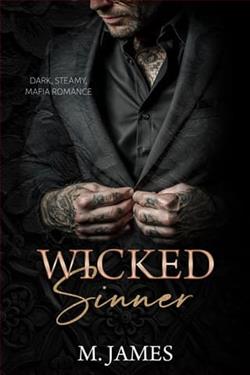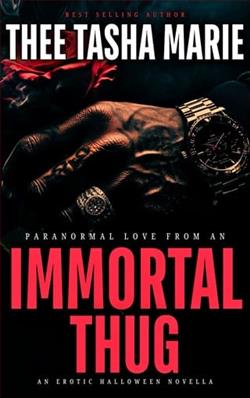Page 86 of Dying Truth
‘That won’t be necessary,’ Kim said. ‘This is a one-off visit, I can assure you.’ Kim raised her eyebrows. ‘There will be no questions, no games and no attempts at manipulation.’
‘So, basically there’s no fun in this meeting for me at all?’ Alex asked, tipping her head.
‘Nothing at all,’ Kim confirmed, feeling a little uncomfortable at the ease with which they had both slipped into their battle positions and the feeling of familiarity that surrounded them both.
Already Kim knew she had to be cautious. This woman could read her better than anyone. Even the slightest deviation from her script or demonstration of emotion would give Alex every bit of ammunition she would need. Alex had once taken her to the edge of sanity and dangled her over the edge. Kim had to make sure she never got that chance again.
‘So, what brings you here to see me, Detective Inspector Stone?’ Alex asked, lacing her fingers.
‘I want to know more about the traits of evil,’ she admitted. ‘Especially when it comes to kids.’
A slow smile spread across Alex’s face. ‘Well then, it looks like you’ve come to the right place.’
Sixty
Alex took a deep breath. ‘So, do you want the official version or mine?’
‘The official version,’ Kim answered.
‘There is no such thing, clinically, as an evil child or a child sociopath. It is felt that a child has not matured sufficiently to be labelled. Specialists will admit to sociopathic behaviour but that’s all. They are more likely to be diagnosed with conduct disorder which can be a precursor to sociopathy.’
‘“Conduct disorder”?’ Kim asked.
‘Starts in early adolescence, more common in boys. Typically selfish, don’t relate well to others, lack guilt, often aggressive. They’ll likely be bullies, cruel to animals, deceitful and rule breakers.’
‘Charming,’ Kim observed.
‘But a child won’t be diagnosed with conduct disorder unless they’ve first been diagnosed with oppositional defiant order which is a precursor for conduct disorder.’
Kim frowned as a vision of Russian dolls sprang into her mind. ‘Hang on, so, you’re saying it’s like an escalation process throughout a child’s formative years. All of these criteria have to be met? Oppositional defiant disorder leads to conduct disorder leads to antisocial personality disorder?’
Alex nodded. ‘And for a child to be diagnosed with antisocial personality disorder they require a conduct disorder diagnosis before the age of fifteen.’
‘Treatment?’ Kim asked, hopefully.
Alex rolled her eyes. ‘There’s no cure or medication, Kim. You know that. Behavioural approaches don’t work as they target specific acts and minimise the bigger picture.
‘The diagnostic criteria ties itself up in knots. A child needs to have experienced three or more of the following in the last twelve months: bullying, fighting, use of a weapon, physical cruelty, mugging, extortion, armed robbery, forced sexual activity—’
‘Jesus,’ Kim interrupted.
‘There are more: fire starting, destruction of property, lying to obtain goods, shoplifting, staying out, running away or playing truant. And one of these must have occurred in the last six months.’
‘Sounds like passing the buck to me,’ Kim observed. ‘Everyone pushing the problem in another direction so they don’t have to make a difficult judgement.’
A slow, lazy smile spread across Alex’s face. ‘Inspector, for once we agree.’
‘Enjoy it, Alex. It’s unlikely to happen again,’ she said. ‘Okay, talk to me about causes.’
Perhaps if she at least understood that she could begin to narrow down the potential suspects.
‘Problems occur more in children of adults who exhibited problems. There may be deficits processing social information or they were rejected by peers as young children; eightypercent of children outgrow it by adulthood.’
Kim was relieved. She’d been after a number and that seemed like a good one to her. ‘That’s a reasonable—’
‘It’s rubbish,’ Alex said, cutting her off. ‘That’s an impossibly high figure of achievement, which doesn’t take into account a statistic that no one will ever be able to estimate.’
‘Which is?’















